To better support real-time business analysis and data-driven decision-making, real-time data warehouses have become standard equipment for enterprise data analysis and decision support. Compared to traditional T+1 offline data analysis, real-time data warehouses can immediately stream data into the data warehouse after a business transaction, enabling T+0 calculation, analysis, and decision-making. Compared to real-time data warehouses built using a patchwork of multiple product components, YMatrix is simple and efficient.
Based on its powerful real-time data processing capabilities, YMatrix provides enterprises with comprehensive analytical capabilities:
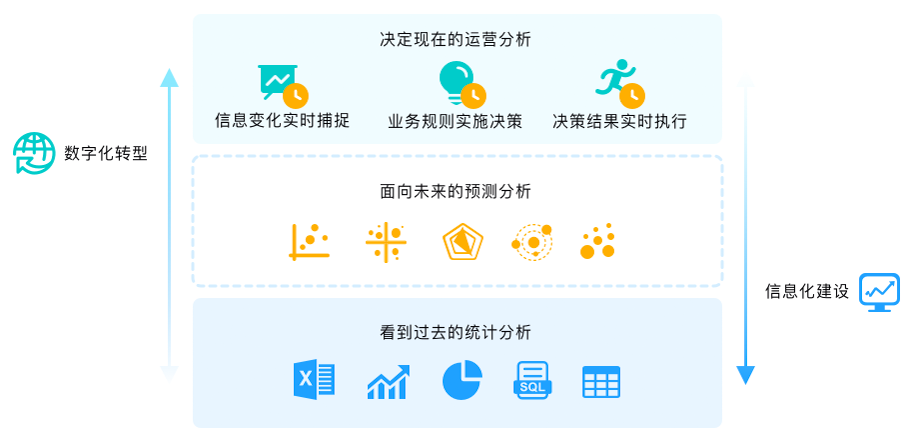
A large financial institution adopted a real-time data warehouse solution, leveraging sub-second transaction data ingestion to enable anti-fraud and anti-money laundering compliance checks, thereby safeguarding public assets.


Two-way integration refers to the integration of technology, products, business, and industry, encompassing all aspects of enterprise production and operations. Due to the uneven level of industrial development in China, the implementation of two-way integration has been relatively slow. YMatrix innovatively proposed a strategy of prioritizing data integration, starting with the integration of IT domain data and OT domain data to establish a 360-degree perception and management of the enterprise, and gradually achieving the integration of technology, products, business, and products.
A large manufacturing enterprise adopted YMatrix to integrate IT operational domain data (including ERP, SCM, CRM, human resources, finance, etc.) and OT production domain data (including equipment data, SCADA, MES, etc.), completely eliminating data silos and low data quality issues. This enables enterprise managers to have a comprehensive understanding of various internal and external events, thereby making scientific decisions based on data.
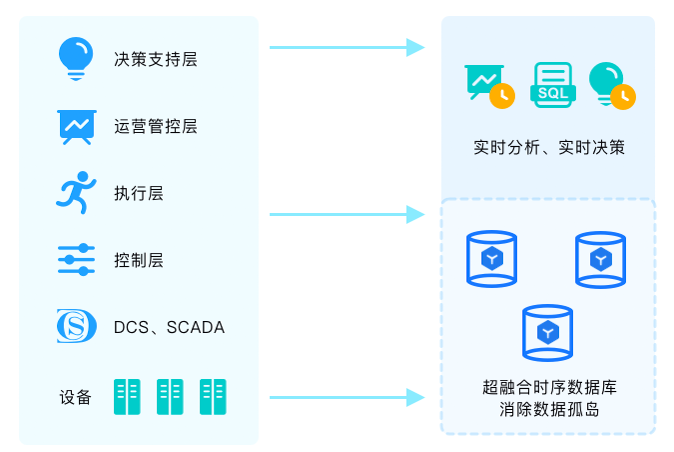
Large enterprises typically have numerous subsidiaries, each located in different cities, which poses significant challenges for headquarters management. Through the innovative matrix2matrix technology, corporate headquarters can gain comprehensive insights into data from all factories, enabling timely and efficient management, significantly improving operational efficiency, and reducing production management and operational costs.
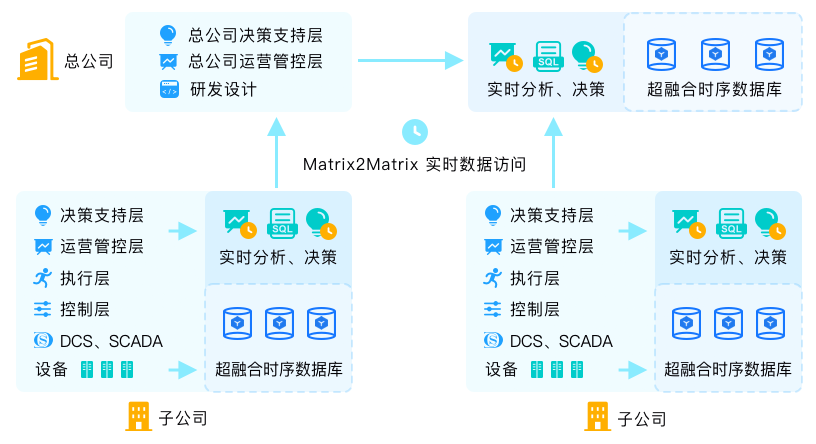

Currently, operations and maintenance primarily rely on real-time data, using tools such as Telegraf, Prometheus, Grafana, and Zabbix. The underlying storage systems often utilize memory, PostgreSQL, InfluxDB, and other databases. The main issue is the inability to support the storage, querying, and analysis of massive amounts of data.
YMatrix offers a ready-to-use intelligent operations and maintenance solution that not only stores and queries monitoring-related metrics, events, logs, and other measurement data, but also manages metadata and operational data from servers, networks, and backend services, enabling integrated analysis to capture every detail of system changes. This provides data-driven insights for root cause analysis, predictive maintenance, and operational process improvements.
The cluster's data scalability and monitoring object scalability capabilities support the monitoring and analysis of thousands of different software and hardware systems. Customizable monitoring dashboards provide visual representations tailored to different scenarios, making YMatrix an indispensable tool for data centers and operations teams.
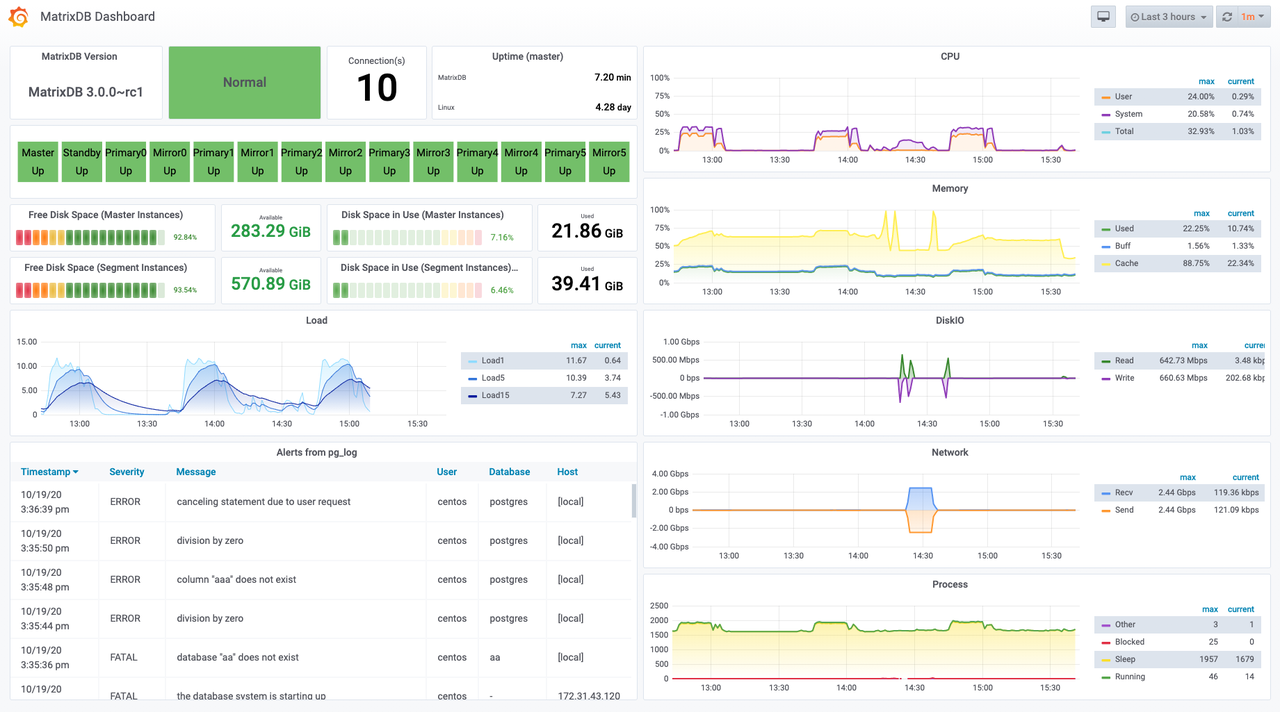
YMatrix can also be used as an extensible monitoring and device data storage module, seamlessly integrating with third-party visualization products such as Zabbix and Grafana, or through standard application interfaces like JDBC/ODBC and custom-developed monitoring management tools.
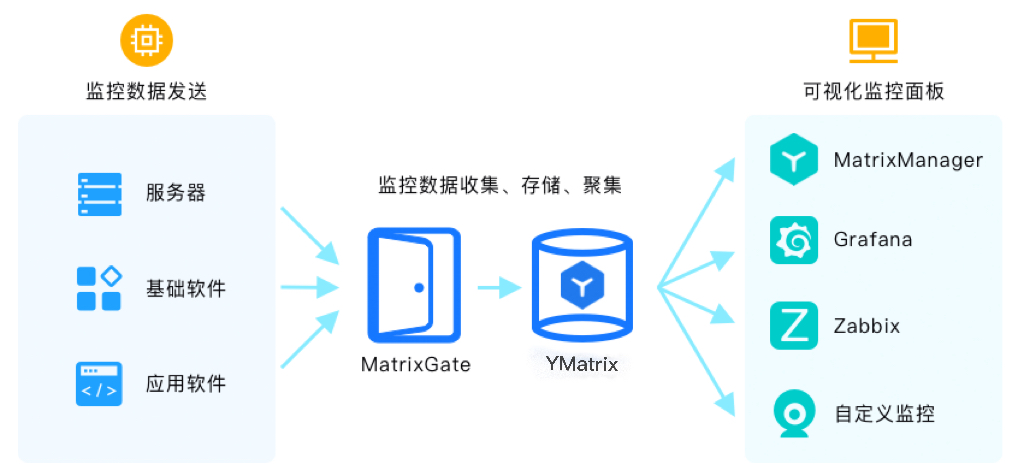

5G is the core of the new generation of information and communications. With the development of 5G, network equipment will generate massive amounts of time series data. Through near-real-time, comprehensive data collection, a real-time network digital topology will be formed to construct digital twins. Data is cleaned in parallel within the database. Using machine learning, missing data, noisy data, and inconsistent data are promptly identified and processed, followed by in-depth analysis and process optimization. The optimization process can be iteratively tested within the digital twin model, providing rapid feedback on effects and issues. The selected mature optimization solutions are then applied to product design, manufacturing, and operations.
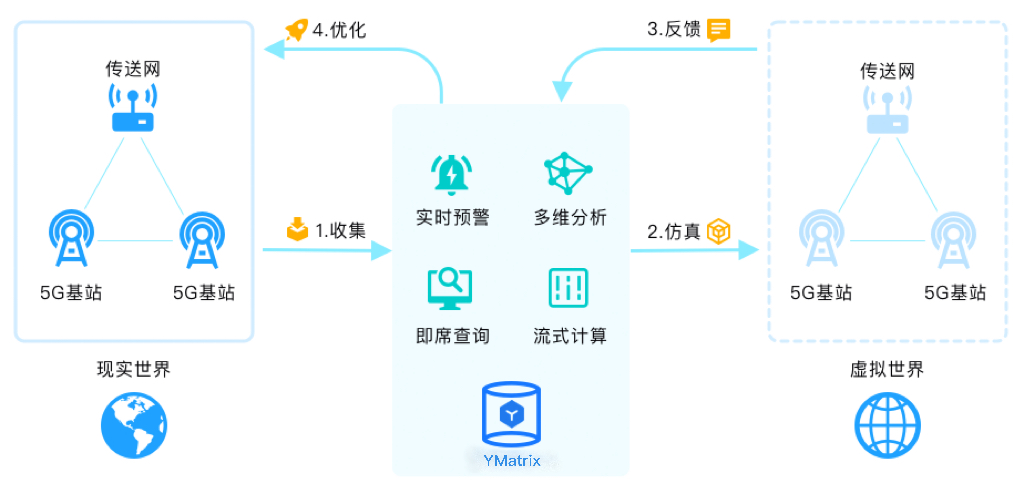

Modern urban residents, vehicles, and devices generate vast amounts of data daily, including various sensor data. The collection and timely analysis of this data can help urban management become more efficient and intelligent. By integrating data from different devices and applications in various formats, a real-time, comprehensive view of urban management is provided, offering simple yet powerful data support for smart transportation, smart education, smart communities, smart healthcare, and other areas.
Take urban power supply and household electricity consumption as an example. Data from transmission networks and household electricity consumption can be collected and combined with local weather conditions to analyze information such as power loss, electricity consumption patterns, and electricity theft, helping to improve power planning, transmission, and management.
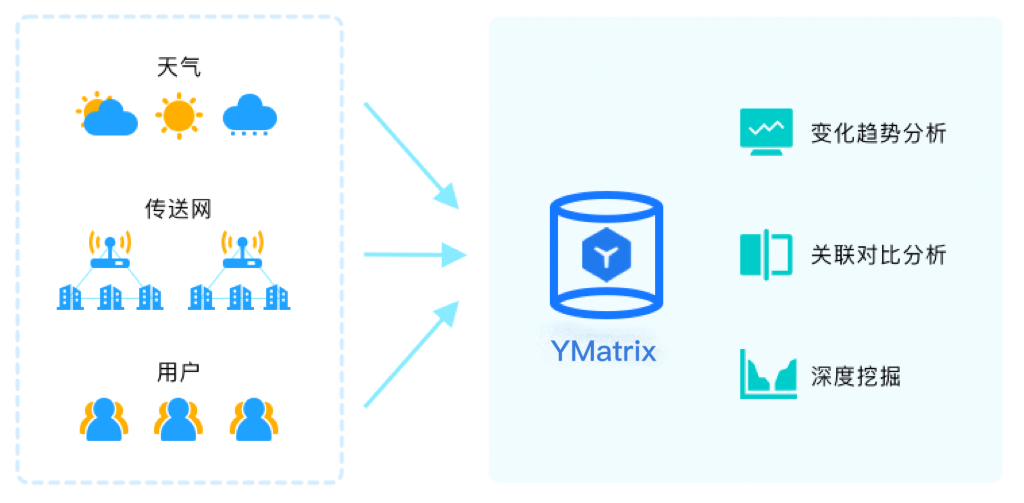
A certain government leveraged PostGIS, time-series components, text modules, and other features to real-time aggregate geospatial information, sensor data, transportation, weather, and other heterogeneous data. By utilizing machine learning within the database, they were able to promptly predict the impact of extreme weather on regional transportation, achieving significant social benefits.
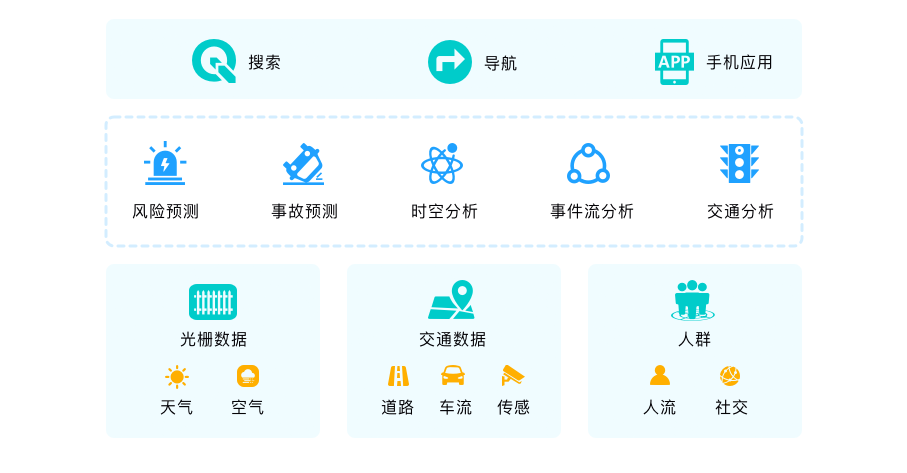

More and more IoT applications are entering practical use. IoT applications often need to process a lot of structured and semi-structured metadata and time series data at the same time. Current solutions typically involve deploying both relational databases and time-series databases simultaneously. When advanced analysis is required, an analytical database is often needed as well. Introducing multiple databases to support a single IoT application poses significant challenges for development and operations, including the need to learn and manage multiple databases, use different interfaces and syntaxes, and handle data synchronization and associations, which impose additional burdens on the system and introduce uncertainties. YMatrix innovatively supports device metadata, metric-based time-series data, efficient CRUD operations, complex analytics, and deep machine learning all within a single database, significantly simplifying system architecture and accelerating application development and deployment processes.
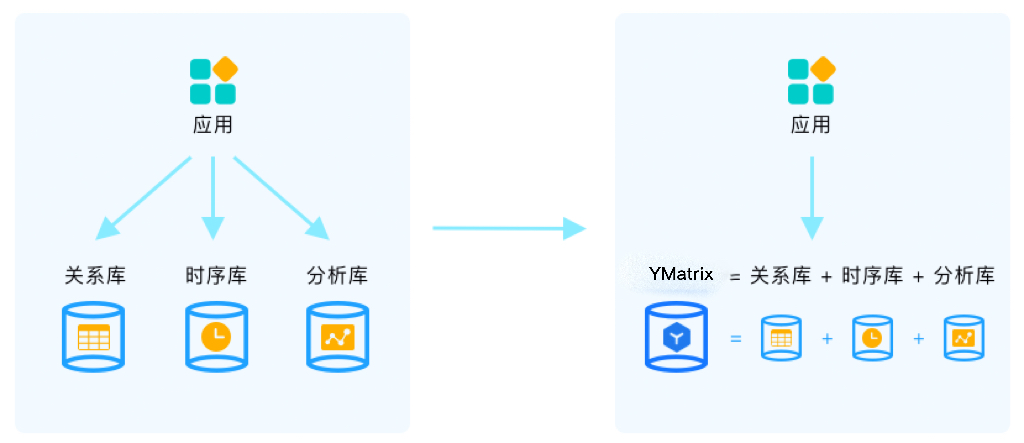
YMatrix is based on PostgreSQL and is compatible with popular development, debugging, and database access tools, allowing developers to work efficiently and iterate quickly. YMatrix is reliable and stable, with a mature clustering solution that can naturally scale to large-scale clusters to support data access for a large number of users and devices when needed.

User behavior analysis is critical for security management and product improvement. Websites and applications provide rich user interfaces, and interactions between users and applications generate a large amount of logs and data. By effectively analyzing this data using techniques such as user profiling, funnel analysis, multi-dimensional analysis, and correlation analysis, operators can deeply uncover user needs and provide comprehensive data support for product evolution, operations, and promotional decisions. The product’s real-time data ingestion, real-time statistics, fast ad-hoc queries, powerful complex SQL capabilities, and support for Python stored procedures make this solution highly popular in user behavior analysis scenarios.
Popular applications face challenges of user, data, and dimension explosion. When dealing with hundreds of millions of users and devices, analyzing over 5,000 dimensions, and supporting hundreds or thousands of analysts conducting interactive queries simultaneously, many systems struggle to keep up. YMatrix, with its scalable computing and storage capabilities and efficient performance, easily handles such demands.
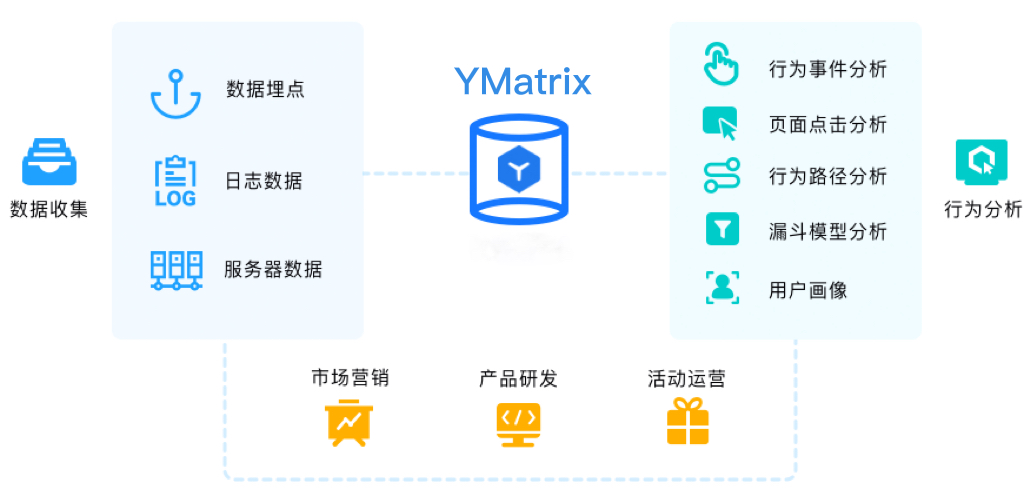
Leading domestic internet companies can process billions of data points daily in real-time using a small-scale cluster, fulfilling all analytical requirements via SQL. Comprehensive tools also simplify system operations and maintenance.